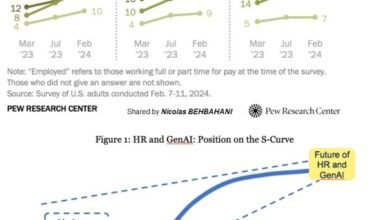
By | Ashwanth B Raj
Let’s debunk some common notions about Work From Home (WFH).
Initially, employees were delighted knowing that WFH would be an increasingly accepted norm for completing one’s work tasks. And then, there were memes like this on the web:
(Source: Google)
This is in part due to the belief that certain job roles and employees such as the ones involving differently-abled and the expectant mothers were unjustly made to work at their office desks when they could have been exempted from being there full-time. It took a pandemic for the corporates to positively look towards enabling WFH as an option to maintain business continuity. Post lockdown, a good deal of employees would choose to continue working from home, should they be given an option to do so. My experience with WFH has not begun yet and my findings are solely from observing my dear wife going about her daily work from the comfort of the bed. Truth be told, WFH may not be all that convenient as it seems due to the reasons mentioned below.
- Most of the workplaces are arranged into Layouts such as Bull-Pens, Open-plan offices, or team clusters. The former allows for a private working space without the prying eyes of the boss. The latter ensures a vibrant atmosphere with ample light and air circulation to facilitate open communication and teamwork. In contrast, remote work would involve working with a Laptop from the bed or the couch in the living room. A private work table would still involve staring at an empty wall.
- While employees spend their office hours exerting themselves to meet deadlines and make presentations, their comfort is ensured while seated on an adjustable revolving chair. This provides hand, back, and neck support without compromising the posture. On the other hand, the posture is severely compromised when the same is done in bed. It might be a good time to consider purchasing a Laptop tray, the next time an employee chooses to work from home.
- Work pressure means more frequent coffee breaks to top that mug from the vending machine. At home, one would have to go through the trouble of making coffee from scratch every single time.
- Another observation of the workstation reveals smaller details such as the way the Monitor is arranged. It is recommended to have the monitor screen set up slightly lower than eye level, i.e. at an angle of 15 degrees. While viewing the laptop screen in bed, the angle is significantly south of 15 degrees. This is why one would experience frequent neck clenching among other Work-Related Neck & Upper Limb Disorders (WRULDs).
- There is a significantly longer time to access one’s firm’s portal from home or CRMs such as Hubspot. This is when the absence of a high-speed fiber network connectivity akin to your workstation, amidst issues such as the poor reception of mobile hotspot or having a limited data package is felt. To add to that, the surge in demand due to the unprecedented WFH experiment has put a strain on the broadband bandwidth. As such an 8-hour work schedule, instantly becomes a 10-hour or at times a 14-hour workday. Other worries include reaching your Fair Usage Policy (FUP) limit, exhausting data meant for personal use, or whether the firm would reimburse for expenses related to the use of the internet.
- An hour of lunch break at the pantry is the equivalent of 2 hours of the same at home since meals have to be cooked from scratch.
- Work has to go on parallel with other chores such as taking care of kids (if any) who are home now permanently, thanks to the indefinite break from school as well as other needs of the family ranging from cooking meals to evening tea and snacks.
- Employees are accustomed to using private spaces in their office, for which slots have to be booked in advance. This facilitates calls to your US-based clients without distraction. On the contrary, the Google Meet session in bed is constantly interrupted by conspicuous knocks at the door by your family members.
- If the above reasons don’t make remote working unattractive, then this next one would. Just imagine when one would have planned the day’s schedule to make important presentations and it is suddenly impeded by an unscheduled power outage. For a moment one would hope, that the generator would kick in just as it used to back at the office.
- Finally, though remote working increases productivity in the sense that it reduces commute hours, other factors such as loneliness can add to a lack of motivation and subsequently decrease productivity, creativity, and innovative thinking. Similarly, problem-solving in a team is quicker when they work together in the same room than remotely on Slack channels.
In a nutshell, it won’t be wrong to say that COVID-19 has finally made some of us realize that all that glitters is not gold. While WFH was something people were craving for, right now, all we crave for is chai, sutta, and piping hot samosa with our work friends!
Originally first published by Ashwanth Raj in LinkedIn







